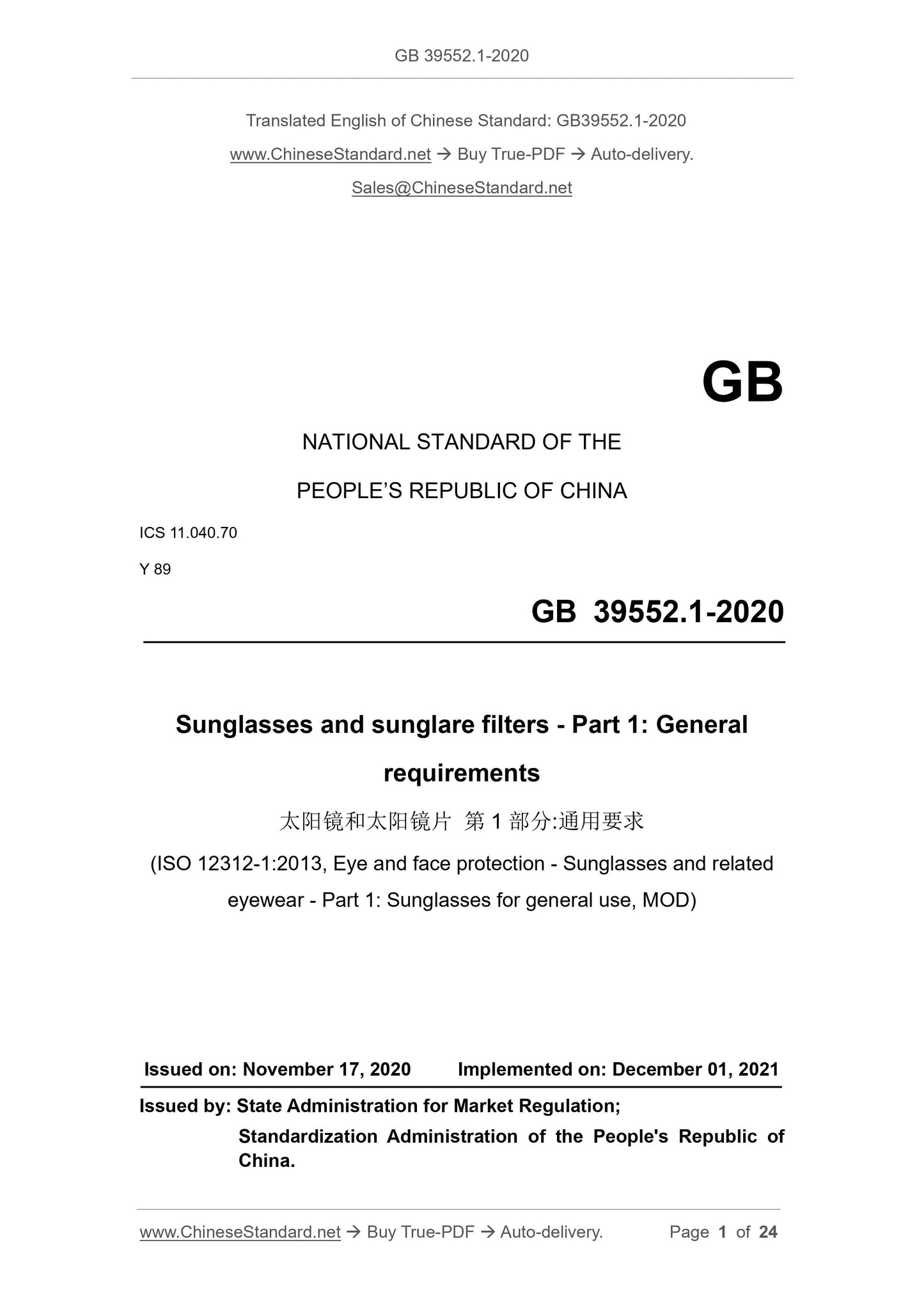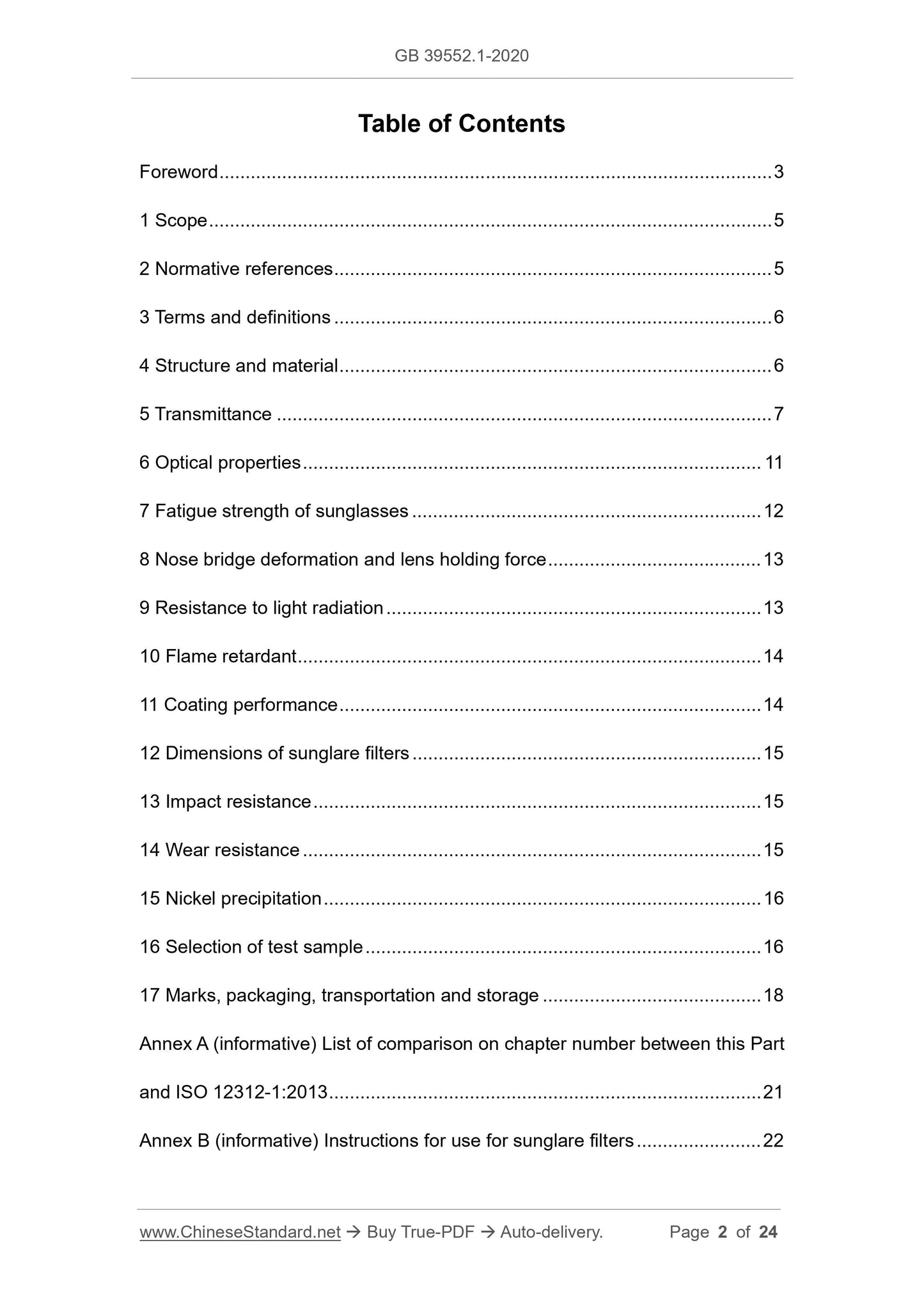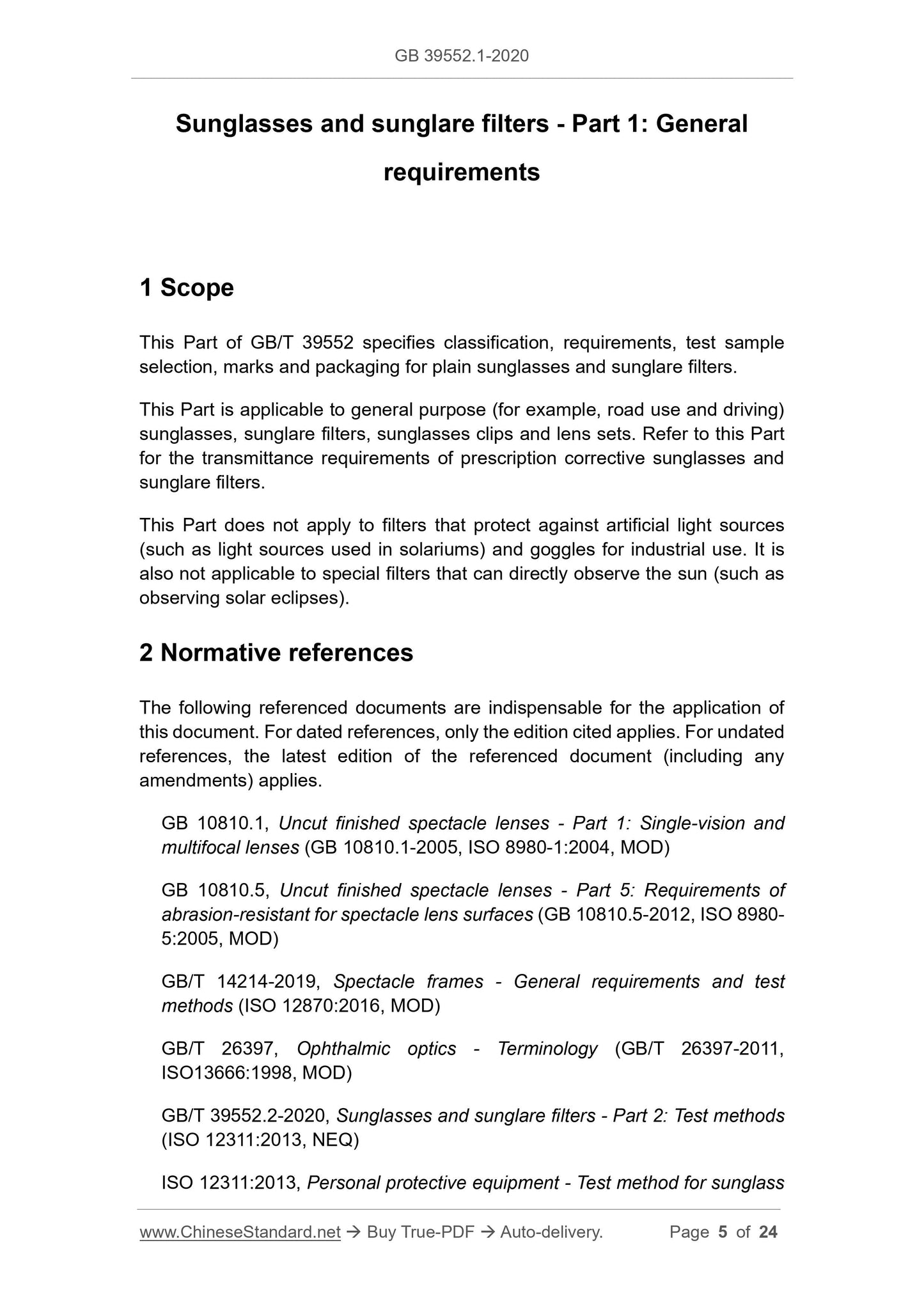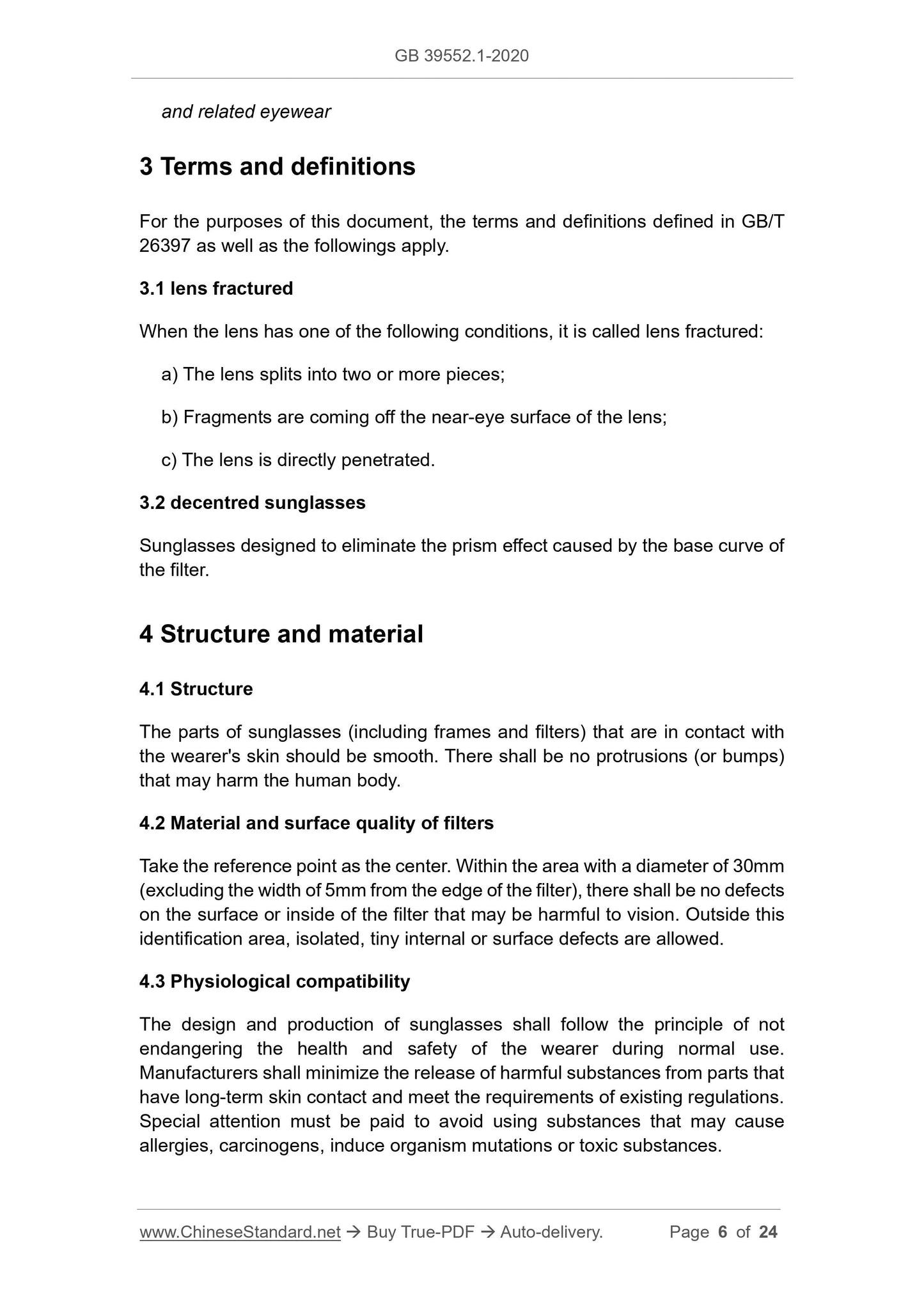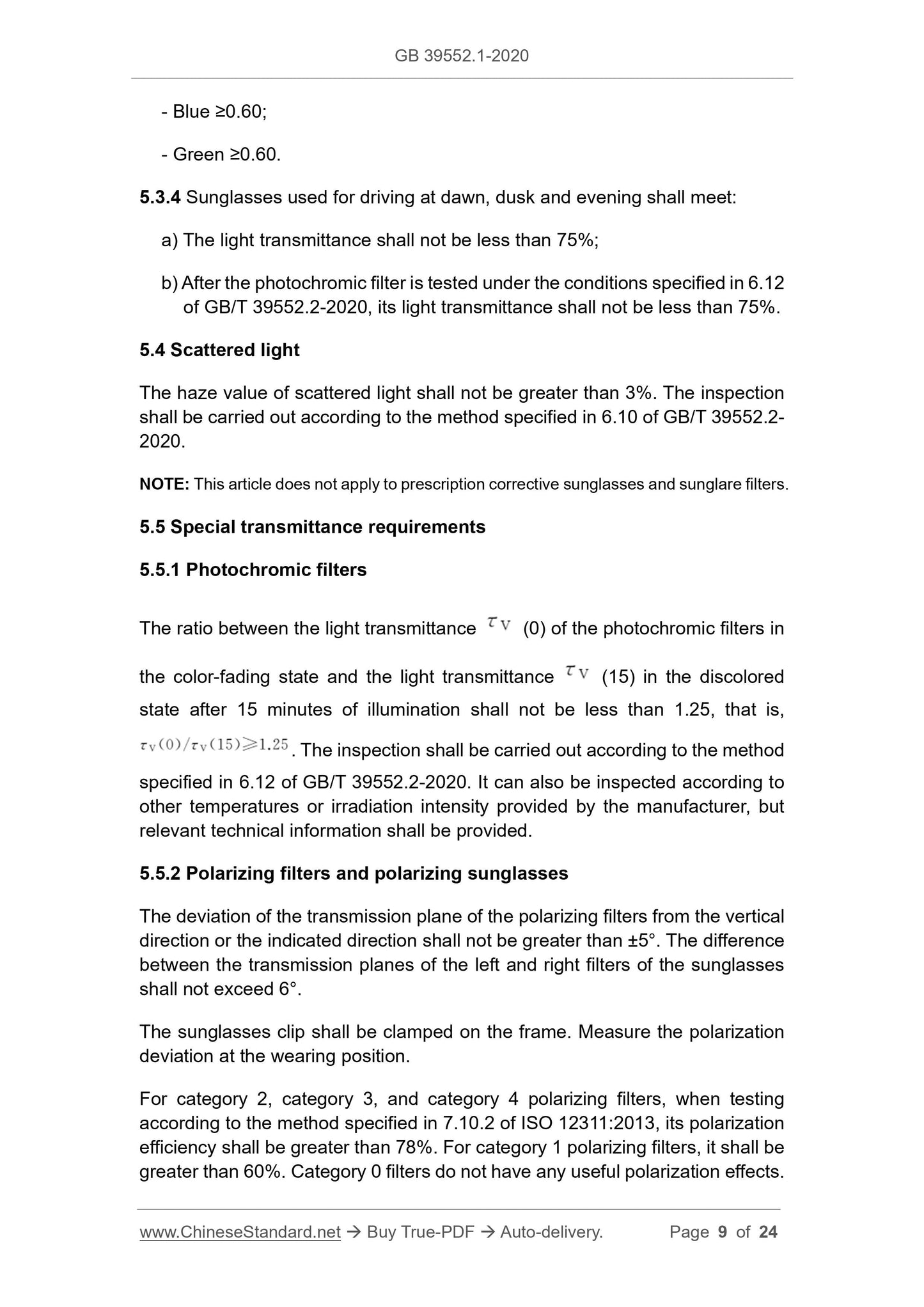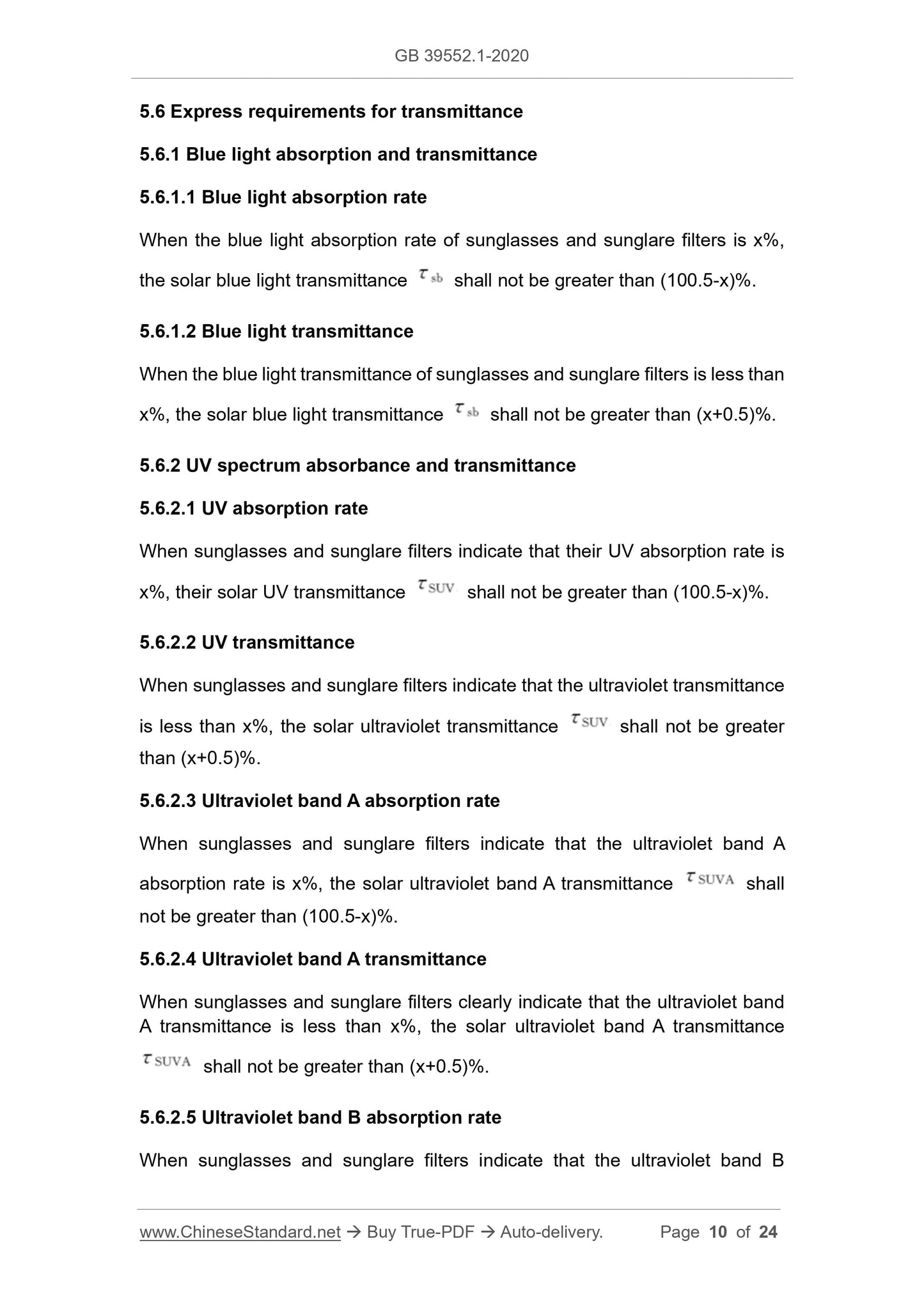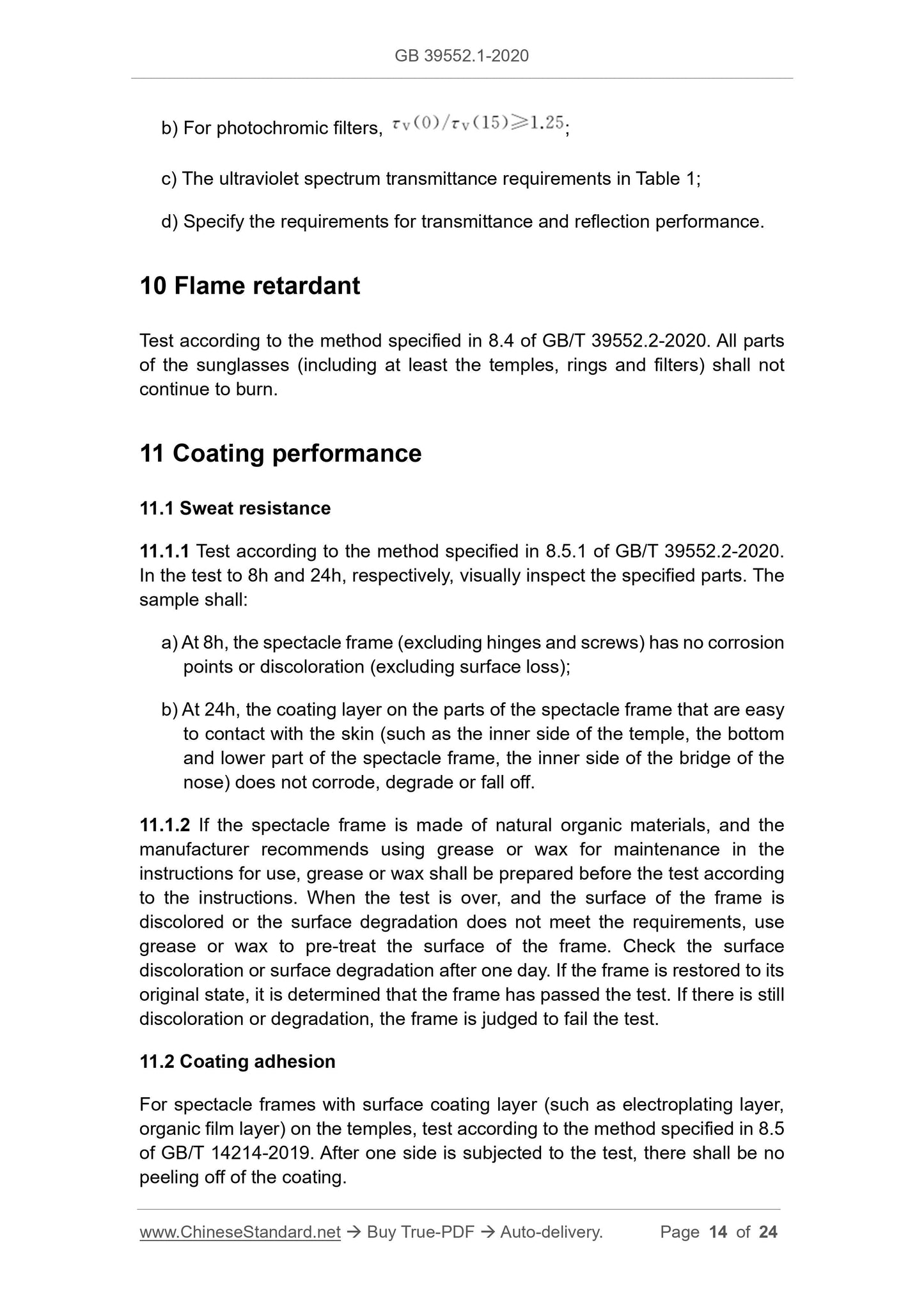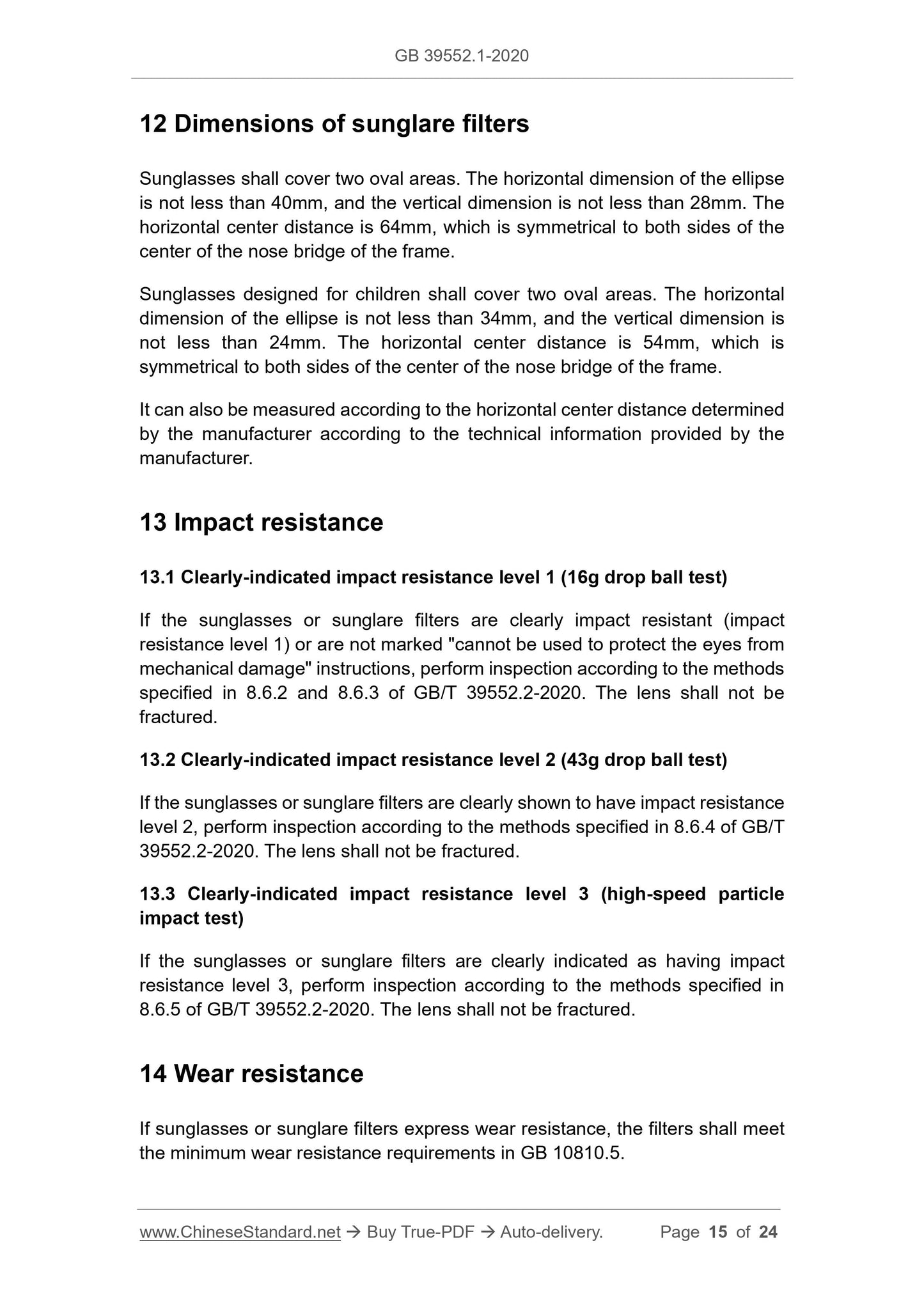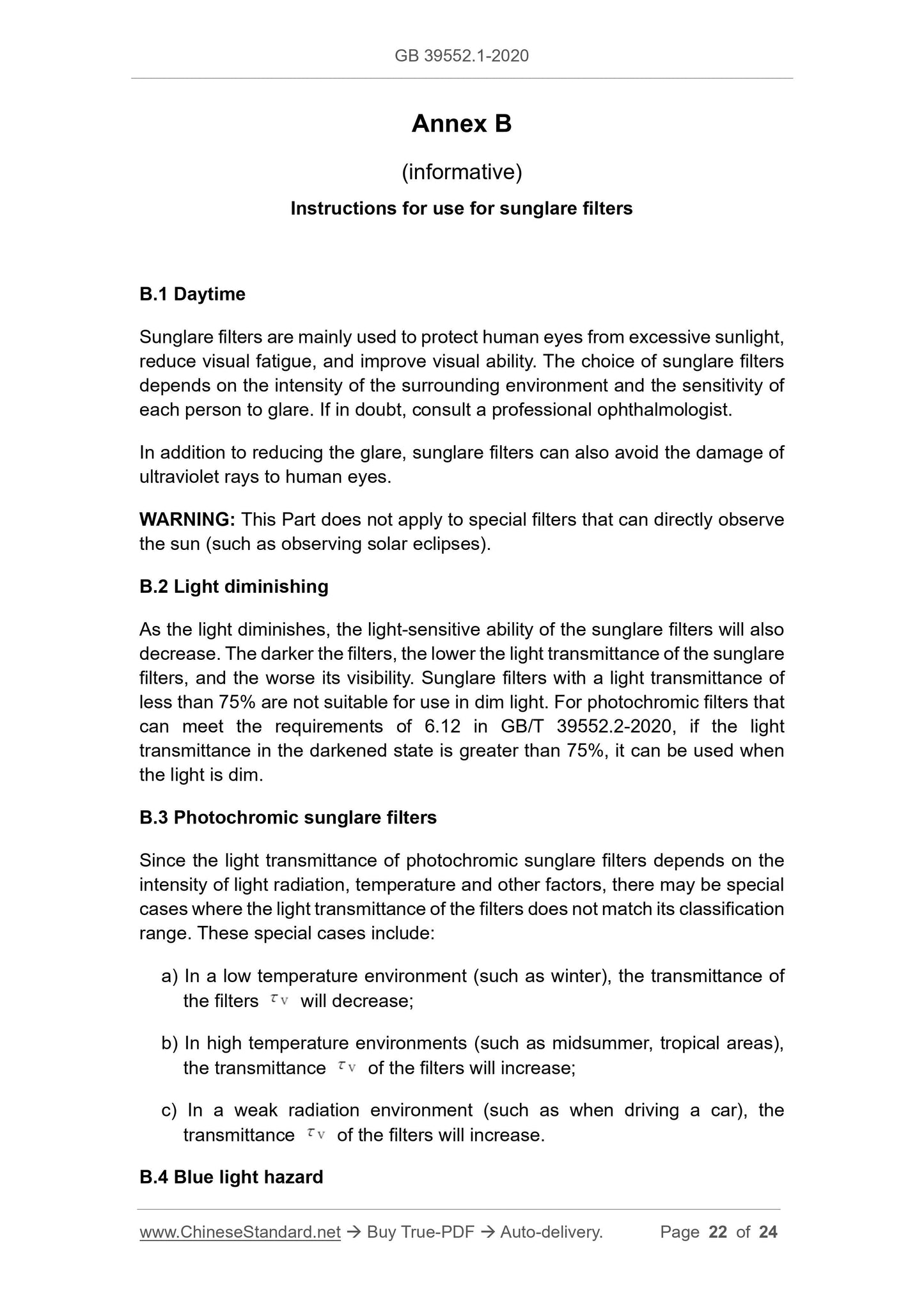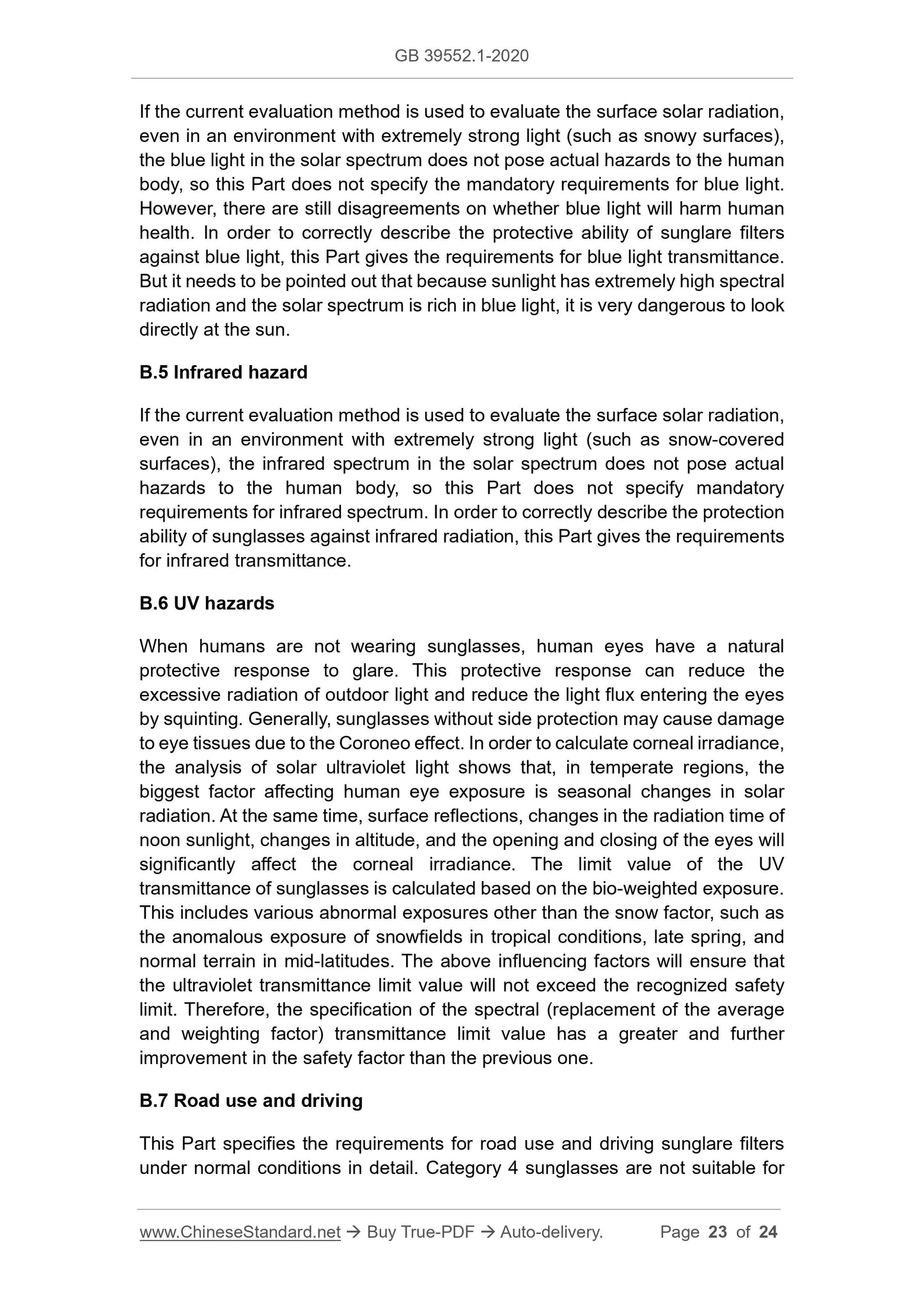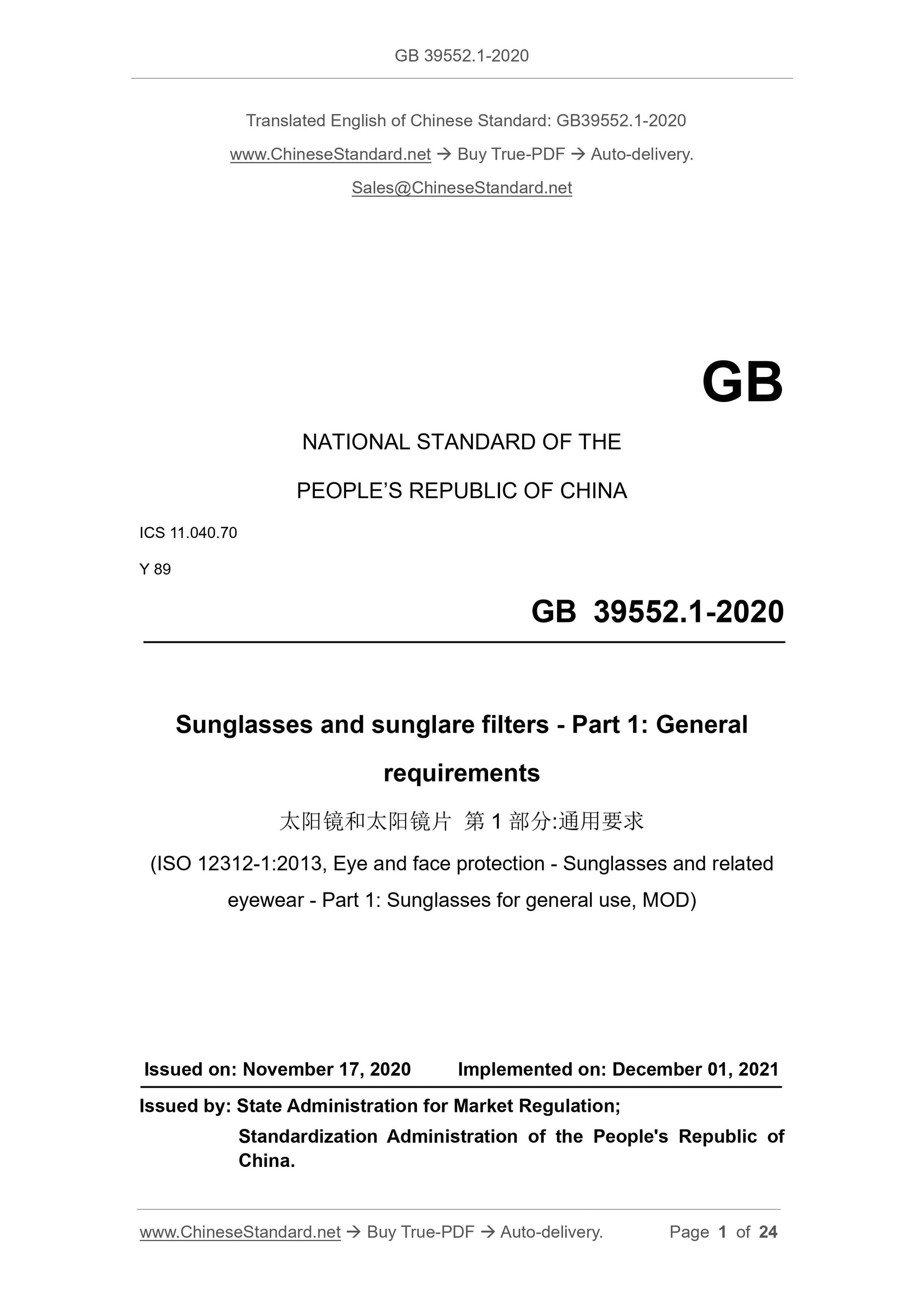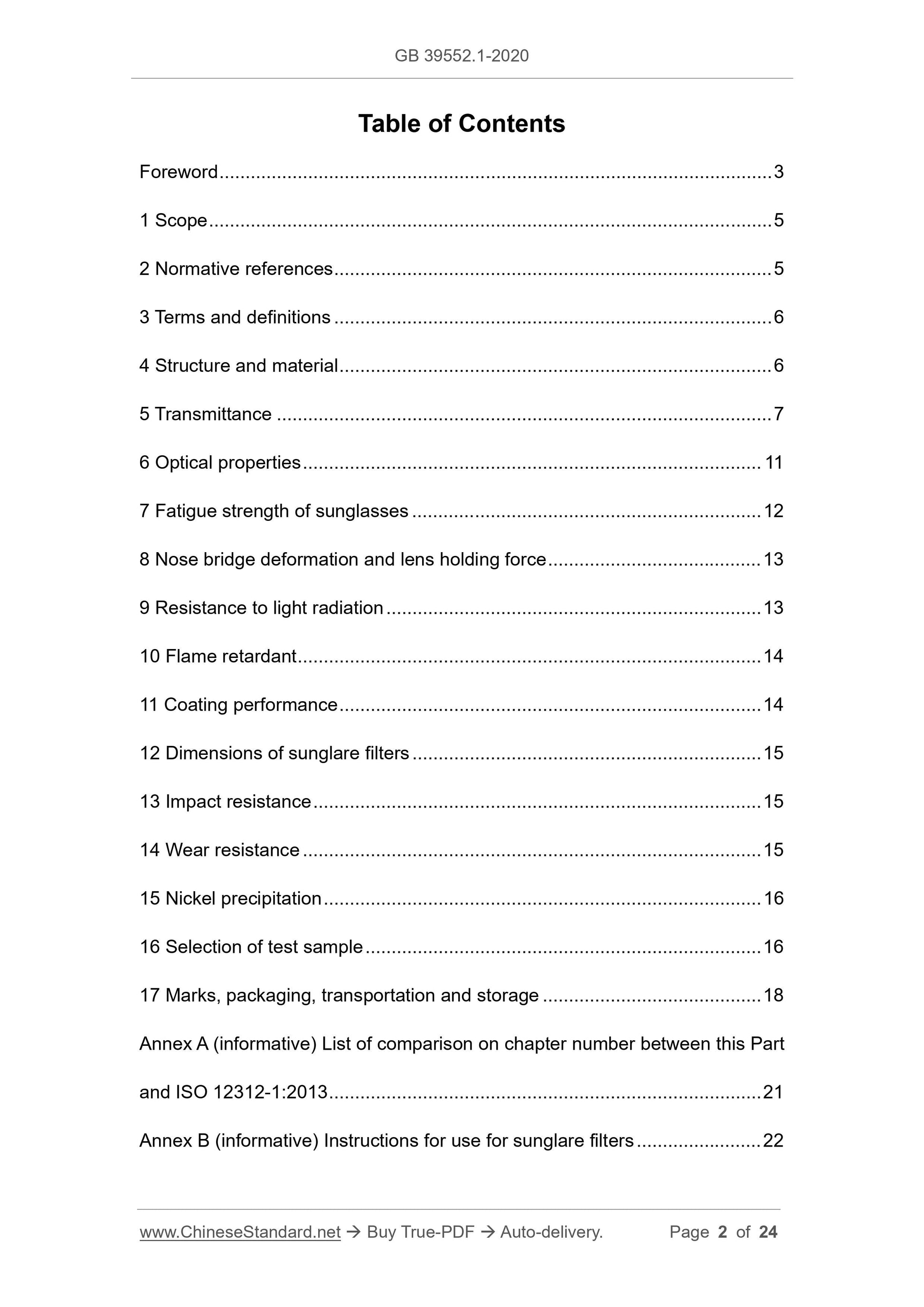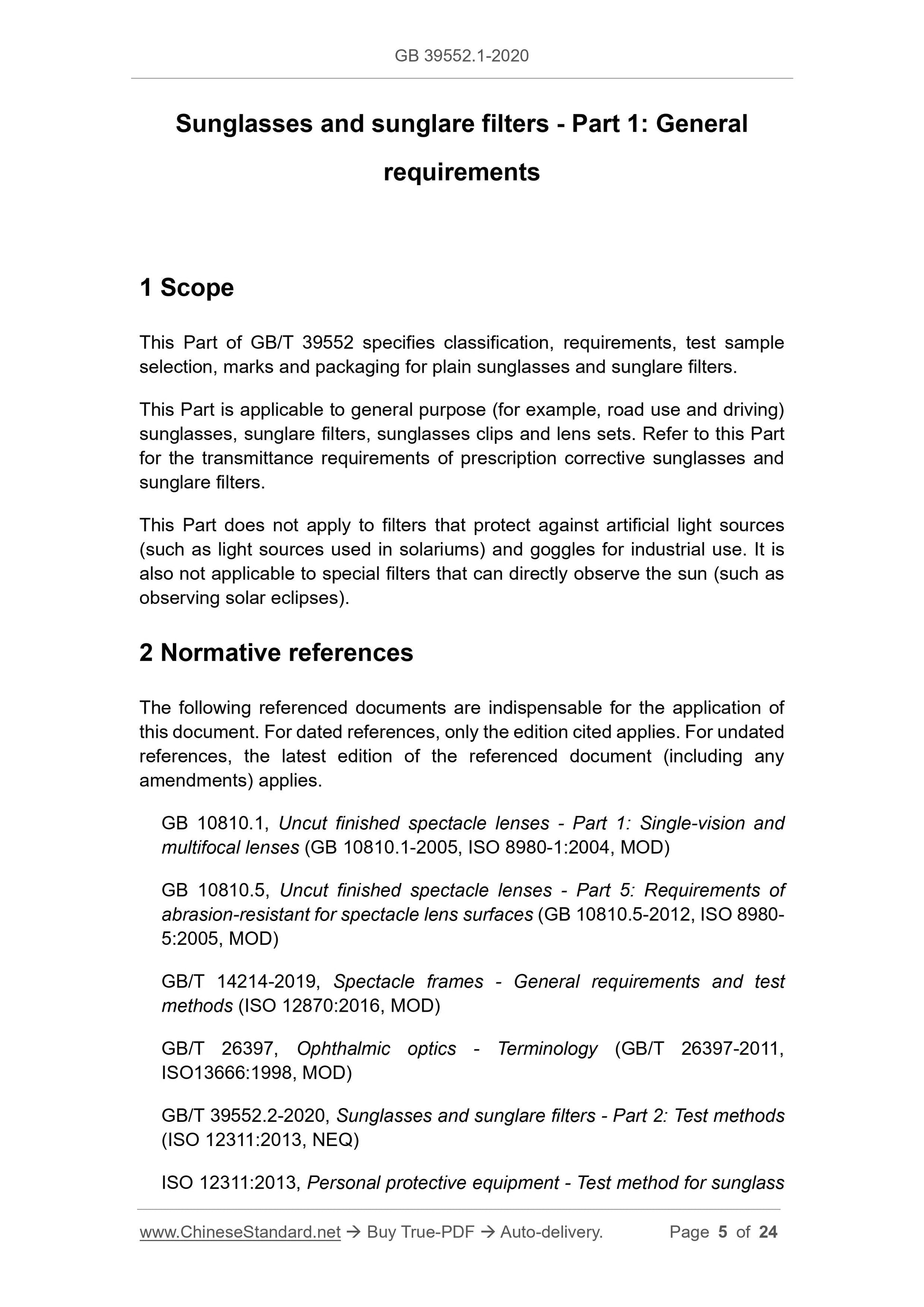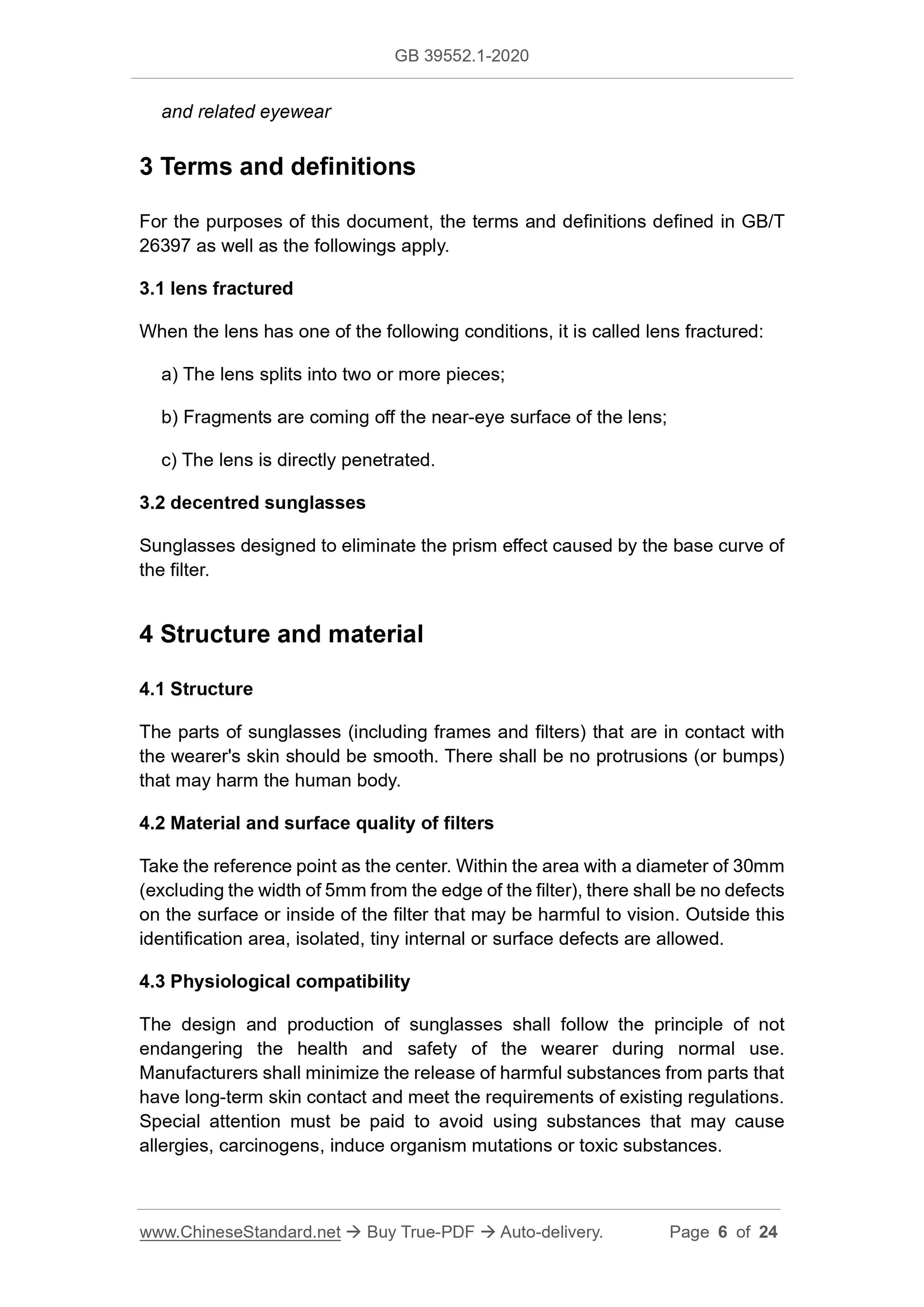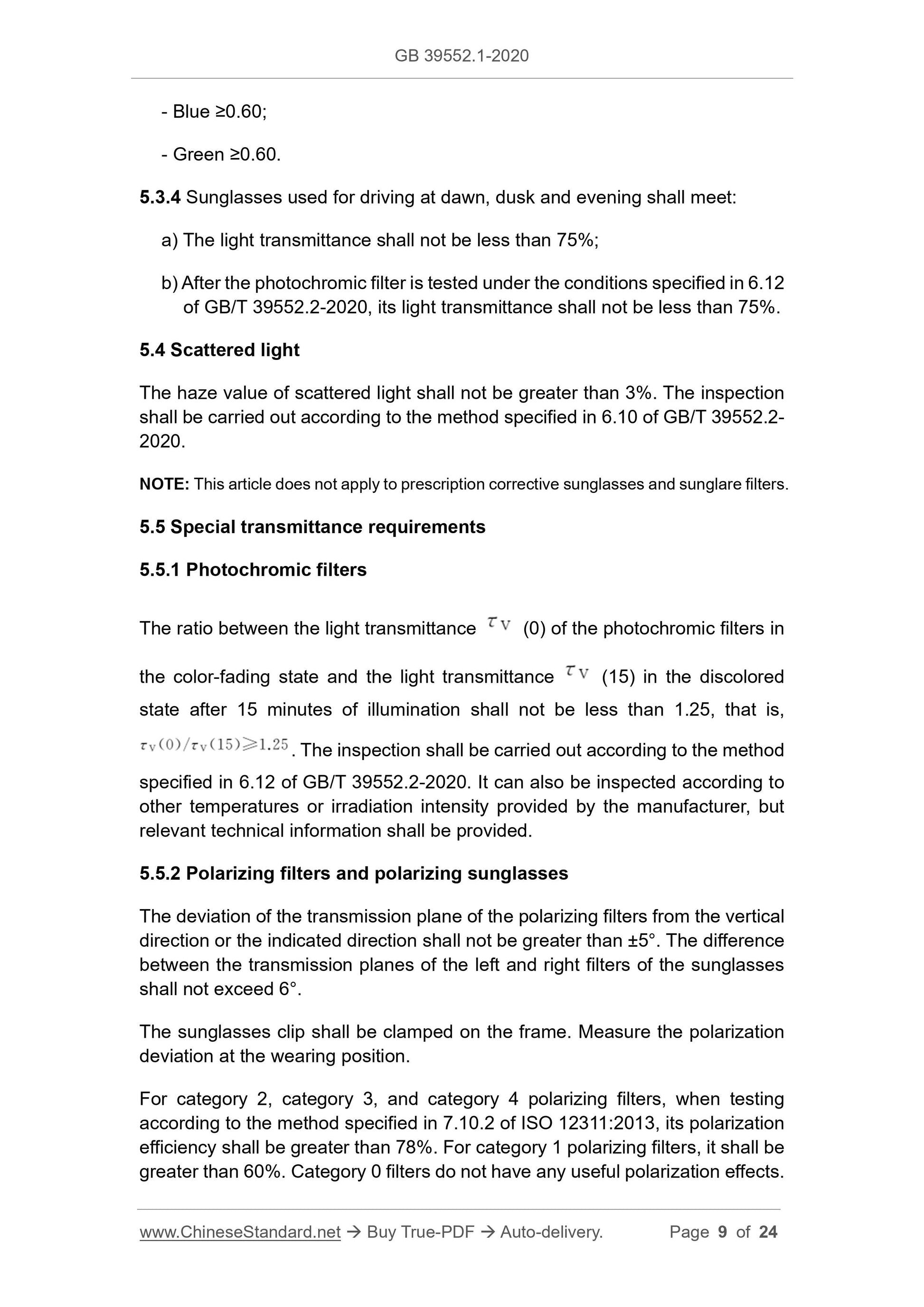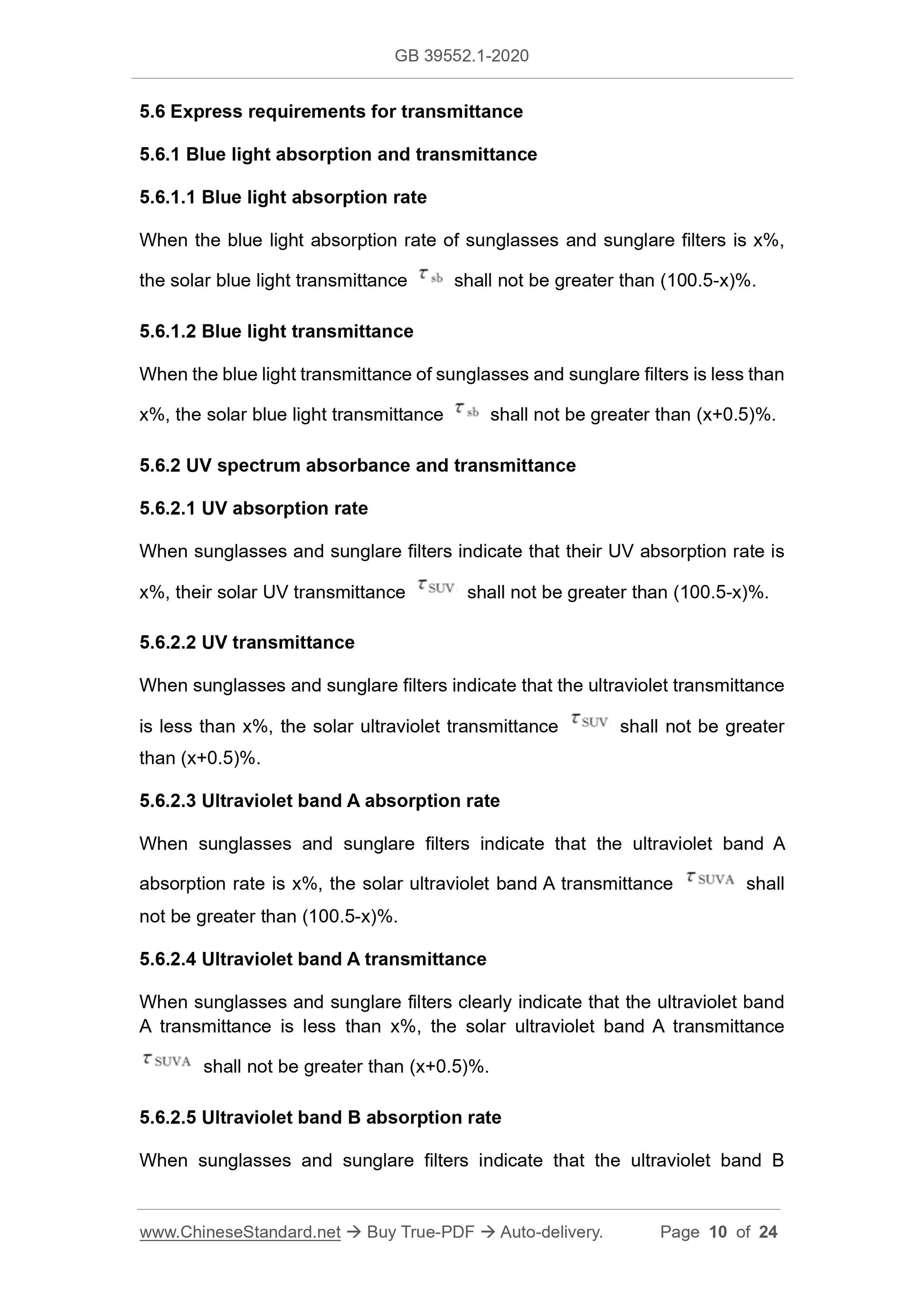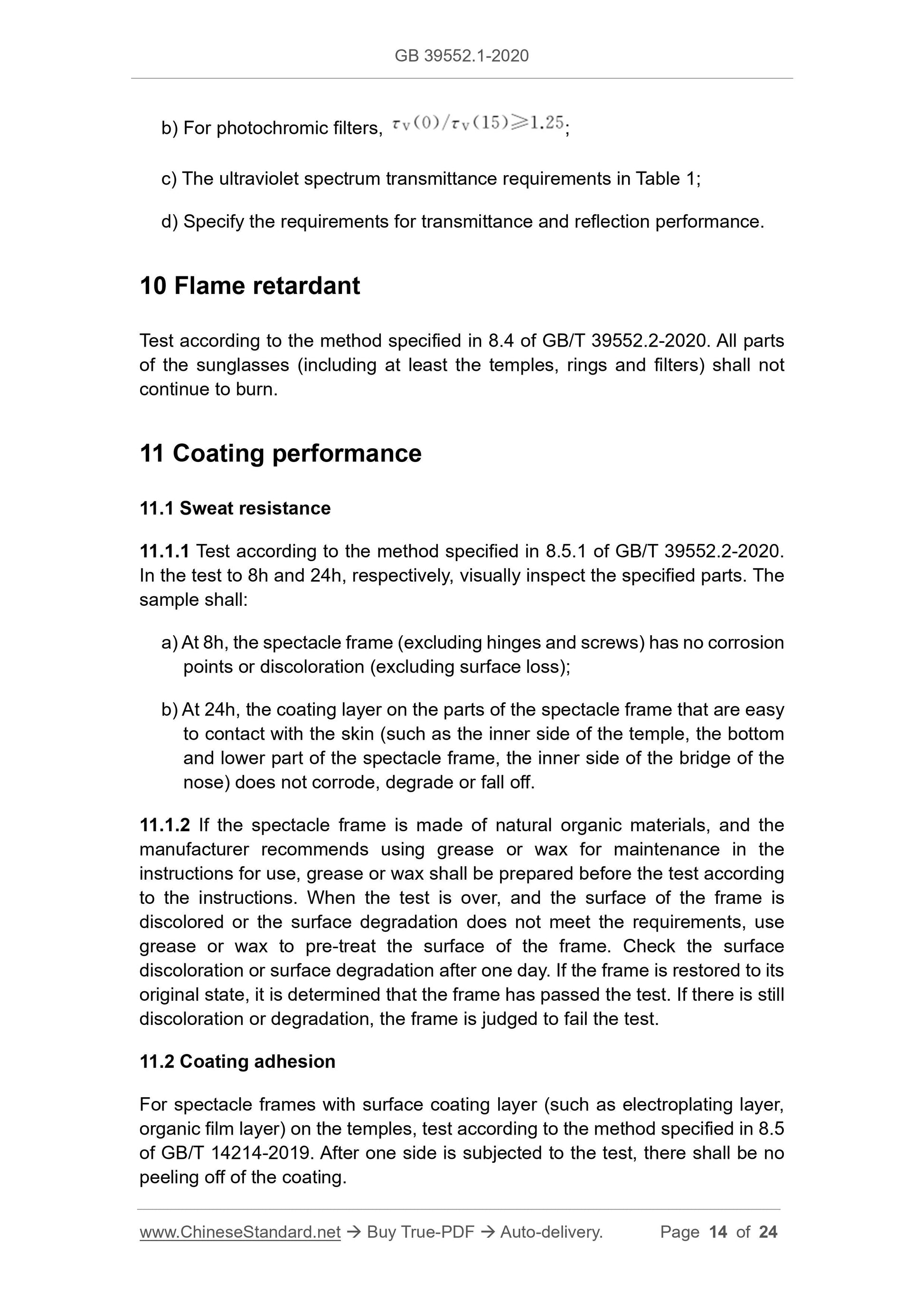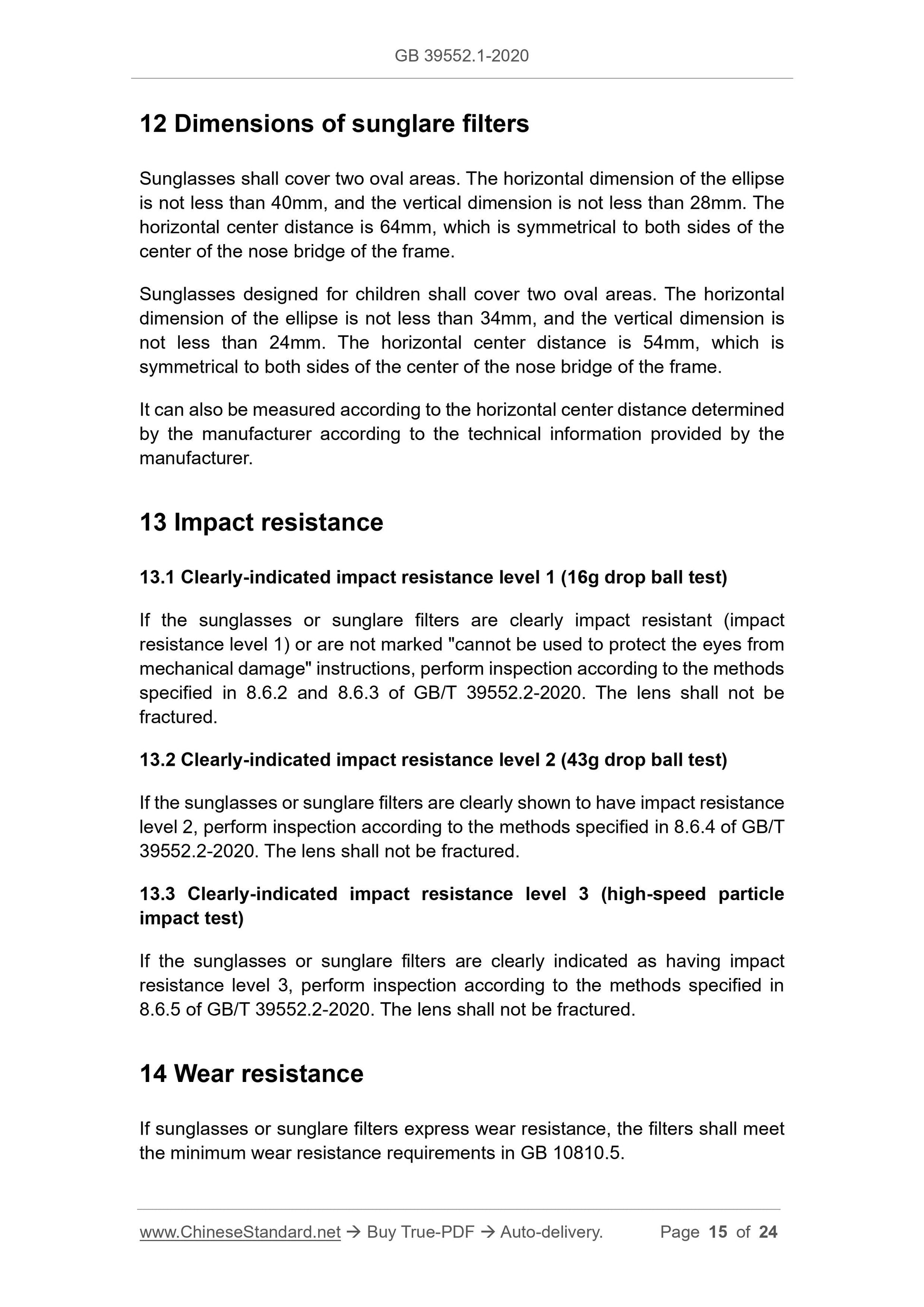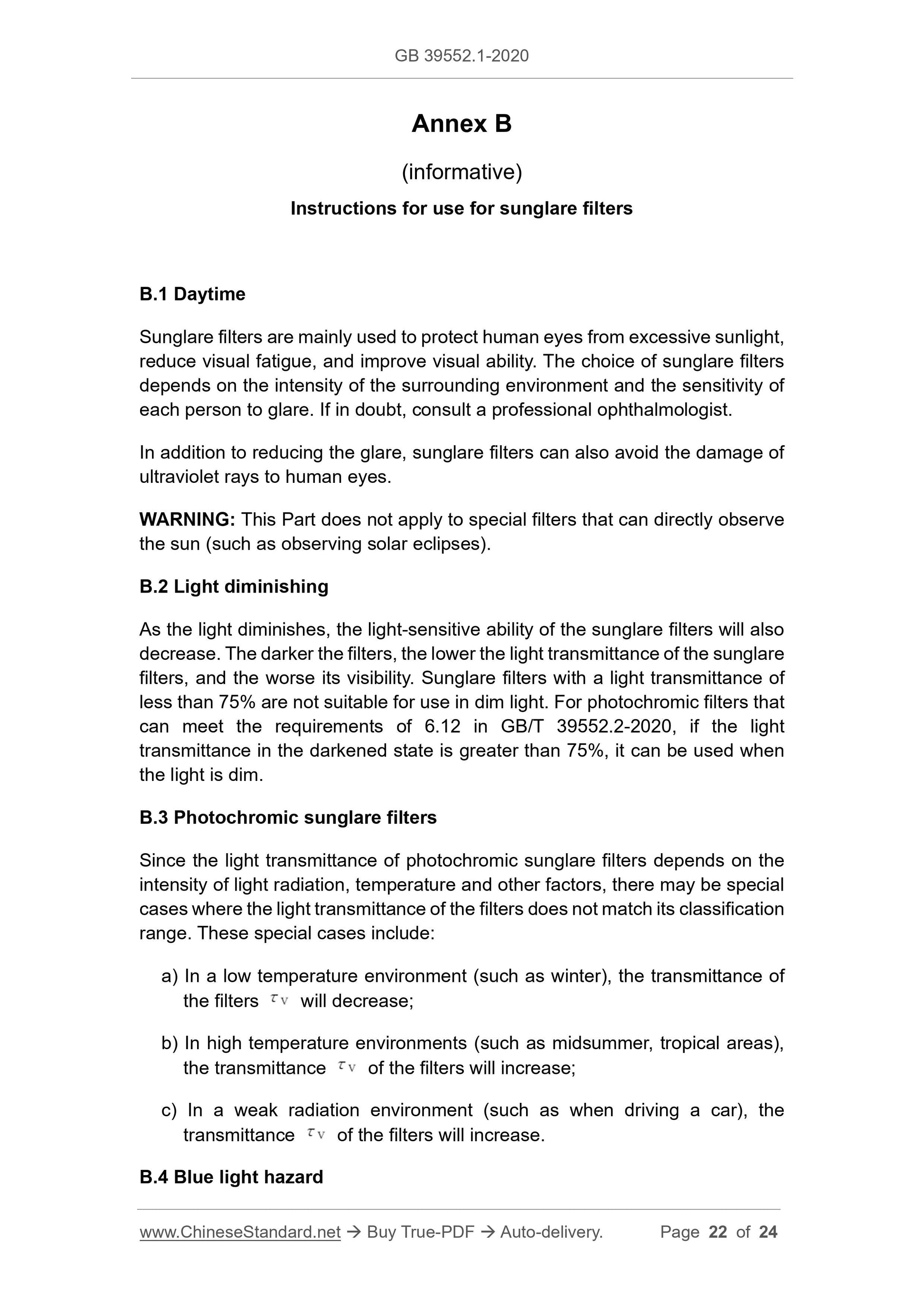1
/
of
10
www.ChineseStandard.us -- Field Test Asia Pte. Ltd.
GB 39552.1-2020 English PDF
GB 39552.1-2020 English PDF
Regular price
$275.00
Regular price
Sale price
$275.00
Unit price
/
per
Shipping calculated at checkout.
Couldn't load pickup availability
GB 39552.1-2020: Sunglasses and sun glare filters - Part 1: General requirements
Delivery: 9 seconds. Download (and Email) true-PDF + Invoice.Get Quotation: Click GB 39552.1-2020 (Self-service in 1-minute)
Newer / historical versions: GB 39552.1-2020
Preview True-PDF
Scope
This Part of GB/T 39552 specifies classification, requirements, test sampleselection, marks and packaging for plain sunglasses and sunglare filters.
This Part is applicable to general purpose (for example, road use and driving)
sunglasses, sunglare filters, sunglasses clips and lens sets. Refer to this Part
for the transmittance requirements of prescription corrective sunglasses and
sunglare filters.
Basic Data
| Standard ID | GB 39552.1-2020 (GB39552.1-2020) |
| Description (Translated English) | Sunglasses and sun glare filters - Part 1: General requirements |
| Sector / Industry | National Standard |
| Classification of Chinese Standard | Y89 |
| Classification of International Standard | 11.040.70 |
| Word Count Estimation | 18,197 |
| Date of Issue | 2020-11-17 |
| Date of Implementation | 2021-12-01 |
| Quoted Standard | GB 10810.1; GB 10810.5; GB/T 14214-2019; GB/T 26397; GB/T 39552.2-2020; ISO 12311: 2013 |
| Adopted Standard | ISO 12312-1-2013, MOD |
| Regulation (derived from) | National Standard Announcement No. 25 of 2020 |
| Issuing agency(ies) | State Administration for Market Regulation, China National Standardization Administration |
| Summary | This standard specifies the classification, requirements, selection of test samples, marking and packaging of flat sunglasses and sunglasses lenses. This standard applies to general-purpose (such as road and driving) sunglasses, sunglasses lenses, sunglasses clips and sets of glasses. The transmittance requirements of prescription corrective sunglasses and sunglasses lenses can refer to this standard. This standard does not apply to lenses that protect against artificial light sources (such as light sources used in solariums) and goggles for industrial use, nor to special lenses that can directly observe the sun (such as solar eclipses, etc.). |
Share
